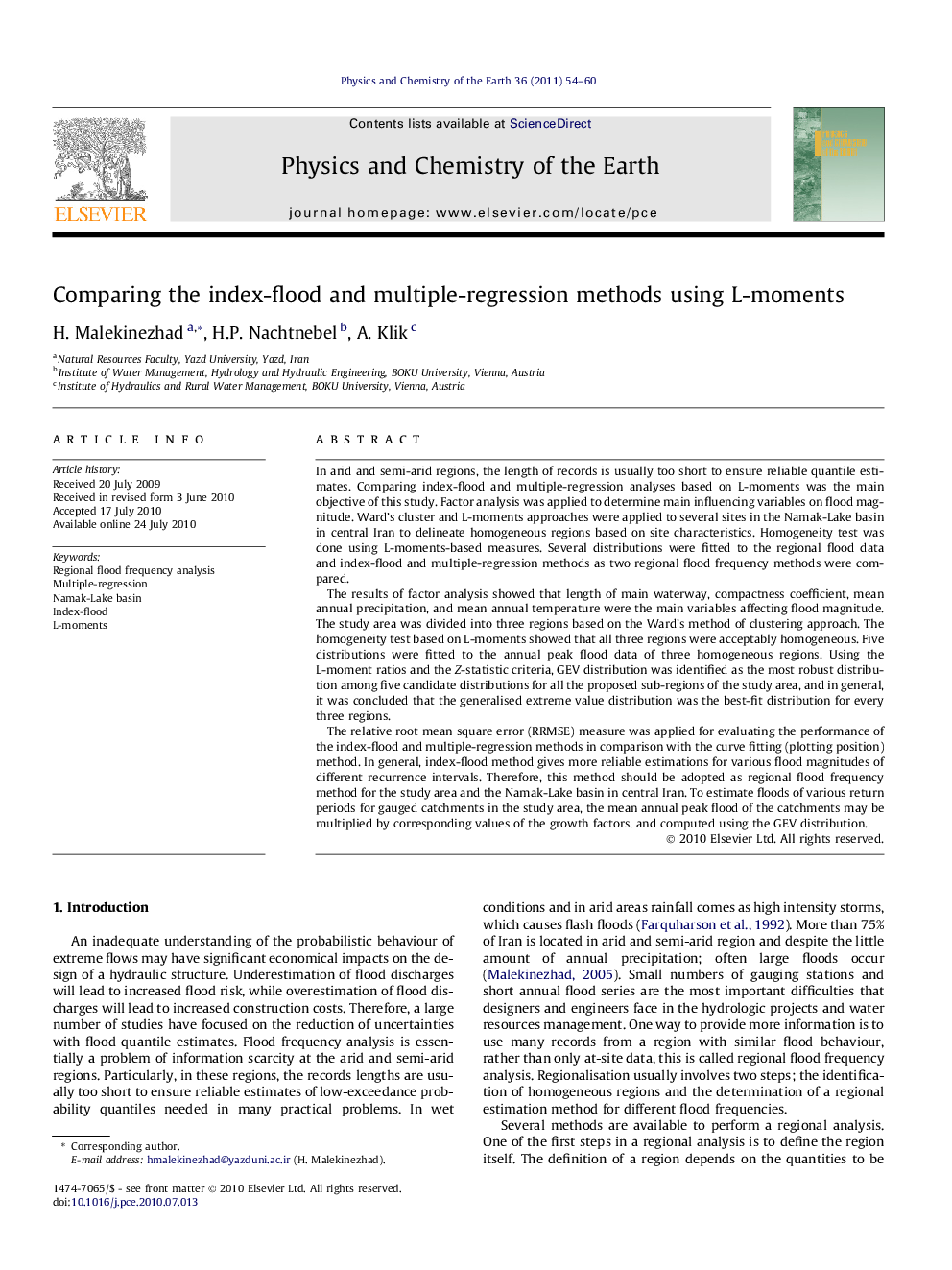| Article ID | Journal | Published Year | Pages | File Type |
|---|---|---|---|---|
| 4721464 | Physics and Chemistry of the Earth, Parts A/B/C | 2011 | 7 Pages |
In arid and semi-arid regions, the length of records is usually too short to ensure reliable quantile estimates. Comparing index-flood and multiple-regression analyses based on L-moments was the main objective of this study. Factor analysis was applied to determine main influencing variables on flood magnitude. Ward’s cluster and L-moments approaches were applied to several sites in the Namak-Lake basin in central Iran to delineate homogeneous regions based on site characteristics. Homogeneity test was done using L-moments-based measures. Several distributions were fitted to the regional flood data and index-flood and multiple-regression methods as two regional flood frequency methods were compared.The results of factor analysis showed that length of main waterway, compactness coefficient, mean annual precipitation, and mean annual temperature were the main variables affecting flood magnitude. The study area was divided into three regions based on the Ward’s method of clustering approach. The homogeneity test based on L-moments showed that all three regions were acceptably homogeneous. Five distributions were fitted to the annual peak flood data of three homogeneous regions. Using the L-moment ratios and the Z-statistic criteria, GEV distribution was identified as the most robust distribution among five candidate distributions for all the proposed sub-regions of the study area, and in general, it was concluded that the generalised extreme value distribution was the best-fit distribution for every three regions.The relative root mean square error (RRMSE) measure was applied for evaluating the performance of the index-flood and multiple-regression methods in comparison with the curve fitting (plotting position) method. In general, index-flood method gives more reliable estimations for various flood magnitudes of different recurrence intervals. Therefore, this method should be adopted as regional flood frequency method for the study area and the Namak-Lake basin in central Iran. To estimate floods of various return periods for gauged catchments in the study area, the mean annual peak flood of the catchments may be multiplied by corresponding values of the growth factors, and computed using the GEV distribution.
